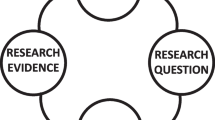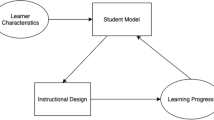Abstract
The World Wide Web provides hypertext and multimedia based information across the Internet. Many applications have been developed on http servers.
One important and novel use of the servers has been the provision of courseware facilities. This includes on-line lecture notes, exercises and their solutions as well as interactive packages suited primarily for teaching and demonstration packages. A variety of disciplines have benefitted notably C programming, X Windows, Computer Vision, Image Processing, Computer Graphics, Artificial Intelligence and Parallel Computing.
This paper will address the issues of (i) implementing a variety of computer science courses and (ii) using the packages in a class environment.
It also considers how best to provide information in such a hypertext based system and how interactive image processing packages can be developed. A suite of multimedia based tools have been developed to facilitate such systems and these will be described in the paper. In particular we have developed a number of methods for running applications live over the WWW.
Similar content being viewed by others
References
C.Butts, C.Reilly, M.Speh, and J.Wang. WWW and the Global Network Academy. In Proceedings of the First International on the World Wide Web, Paper no 36, CERN, Geneva, Switzerland, May 25–27 1994. World Wide Web Document URL: http://www1.cern.ch/papersWWW94/speh.ps.
Clarkson University, World Wide Web Document URL: http://fire.clarkson.edu/doc/html/htut.html. HTML Documents: A Mosaic Tutoria, 1994.
E.A. Fox et al. Progress in interactive learning with a digital library in computer science. In Proceedings of ED-Media 95: World Conference on Educational Multimedia and Hypermedia, pages 7–12, Graz, Austria, June 1995.
R.Gagné, L.Briggs, and W.Walter. Principles of Instructional Design (4th edition). Harcourt, Brace, Jovanovich, New York, USA, 1992.
R.M.Gagné. The Conditions of Learning (4th Ed.). Holt, Rinehart and Winston, New York, USA, 1985.
W. Hall and H. Davis. Hypermedia link services and their application to multimedia information management. Journal of Information and Software Technology (Special Edition on Multimedia), 1994.
R.Heinich, M.Molinda, and J.D.Russell. Instructional Media. Macmillan Publishing, New York, USA, 1993.
S. Hurley, A.D. Marshall, S.N. McIntosh-Smith, and N.M. Stevens. Courseware for parallel computing using Mosaic and the World Wide Web. In Proceedings of the 2nd International WWW Conference '94, volume 1, pages 499–508, Chicago, USA, October 1994.
S. Hurley and N.M. Stephens. Courseware in high performance computing. In Proceedings International Conference on Parallel Computing for Undergraduates, Colgate, USA, June 1994.
B.Ibrahim. World-wide algorithm animation. In Proceedings of the First International on the World Wide Web, Paper no 32, CERN, Geneva, Switzerland, May 25–27 1994. World Wide Web Document URL: http://www1.cern.ch/papersWWW94/bertrand.ps.
Internet News Group. Comp.lang.c Frequently Asked Questions, 1995.
D.Jonassen, K.Beissner, and M.Yacci. Structural Knowledge: Techniques for Representing Conveying, and Acquiring Structural Knowledge. Lawrence Erlbaum, New Jersey, USA, 1992.
F.Kappe and H.Maurer. Hyper-G — a universal hypermedia system. Journal of Educational Multimedia and Hypermedia, 2(1):39–66, 1993.
R.Kozma. Learning with media. Review of Educational Research, 61(2): 179–211, 1991.
D.Laurillard. Rethinking University Teaching. Routledge, London, U.K., 1993.
M.G.Lavenant and J.A.Kruper. The phoenix project: Distributed hypermedia authoring. In Proceedings of the First International on the World Wide Web, Paper no 21, CERN, Geneva, Switzerland, May 25–27 1994. World Wide Web Document URL: http://www1.cern.ch/papersWWW94/j-kruper.ps.
G.Marchionini. Hypermedia and learning: Freedom and chaos. Educational Technology, 28(11):8–12, 1988.
A.D. Marshall. Hypertext based computer vision teaching packages. In Proc. SPIE Conference on Machine Vision Applications, Architectures, and Systems Integration III, Photonics East 94, volume 1, pages 207–219, Boston, USA, October 1994.
A.D. Marshall. Developing hypertext courseware on the world wide web. In Proceedings of ED-Media 95: World Conference on Educational Multimedia and Hypermedia, pages 418–423, Graz, Austria, June 1995.
A.D.Marshall, S.Hurley, S.N.McIntosh-Smith, R.R.Martin, and N.M.Stevens. Novel uses of computers for teaching. AXIS: The UCISA Journal of Academic Computing and Information Systems, 1(3):30–41, 1994.
W.Montague and F.Knirk. What works in adult instruction: the management, design and delivery of instruction. International Journal of Educational Research, 19:327–433, 1993.
National Centre for SuperComputing Applications, World Wide Web Document URL: http://www.ncsa.uiuc.edu/SDG/Software/Mosaic/Docs/mosaic-docs.html. NCSA Mosaic Documentation, 1994.
Netscape Communications Corporation, World Wide Web Document URL: http://www.netscape.com. Netscape Home Page, 1995.
North Western Universty, World Wide Web Document URL:http://www.eecs.nwu.edu/unix.html. UNIX Reference Desk, 1995.
A.G.Romiszowski. Educational system design implications of electronic publishing. Educational Technology, 34(7):6–12, 1994.
D.Rowntree. Educational Technology in Curriculum Development. Paul Chapman, London, U.K., 1982.
A.Smeaton. Using hypertext for computer based learning. Computers in Education, 17(3):173–192, 1991.
Sun Microsystems Ltd., World Wide Web Document URL: http://www.sun.com/. Hot Java Home Page, 1995.
Technical University, Graz, Austria, World Wide Web Document URL: http://www.iicm.tu-graz.ac.at/. Hyper-G Gateway, 1995.
University of Hawaii, World Wide Web Document URL: http://www.hcc.hawaii.edu/guide/www.guide.html. Entering the World Wide Web: A guide to Cyberspace, 1994.
University of Soutern Florida, World Wide Web Document URL:http://www.eecs.nwu.edu/unix.html. UNIX Programming Sites on the Web, 1995.
Virginia Tech University, World Wide Web Document URL: http://ei.cs.vt.edu/. Virginia Tech/Norfolk State University Home Page, 1995.
A.M. Zin and E. Foxley. Automatic program quality assessment system. In Proceedings of the IFIP Conference on Software Quality, S P University, Vidyanagarm India, March 1991.
Author information
Authors and Affiliations
Rights and permissions
About this article
Cite this article
Marshall, A.D., Hurley, S. The design, development and evaluation of hypermedia courseware for the World Wide Web. Multimed Tools Appl 3, 5–31 (1996). https://doi.org/10.1007/BF00403082
Issue Date:
DOI: https://doi.org/10.1007/BF00403082




